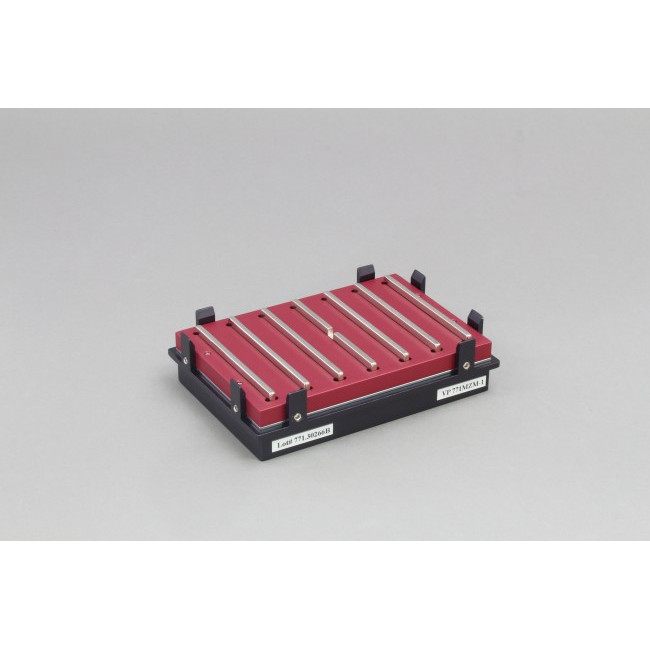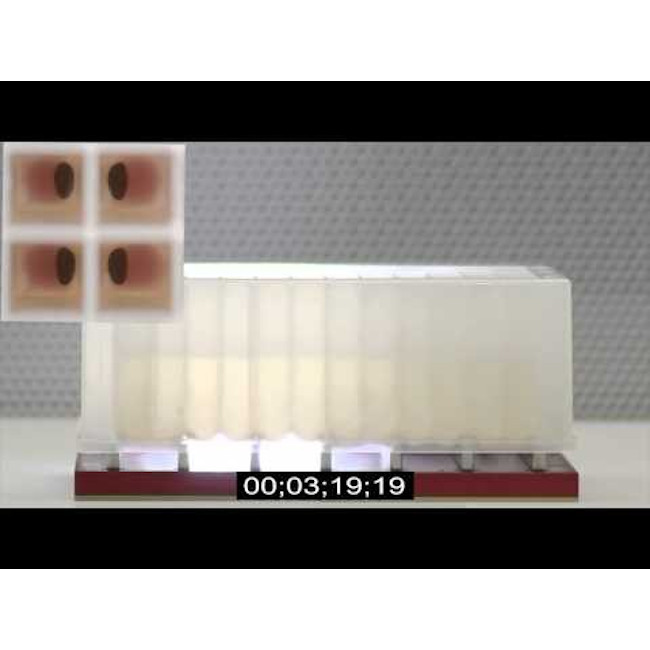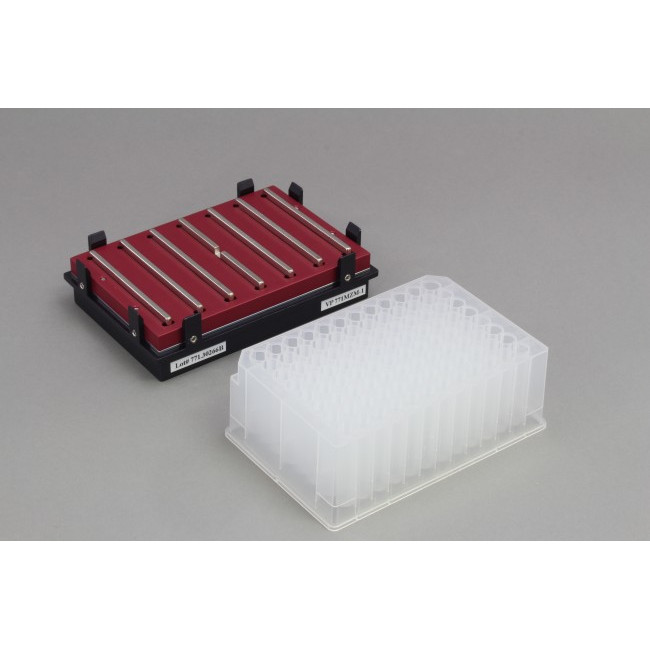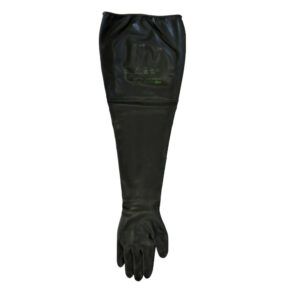Magnetic Bead Separation Devices:
V&P has developed over 100 different magnetic bead separation devices for microplates of nearly every description and we have
refined, perfected and consolidated that list down to the best 72. Many of these are offered with and without
an adjustable microplate registration systems for precise alignment or with different colored separation blocks for easy visualization (white or red)
:
# 4 well, 6 well, 12 well, 24 well, 48 well, 96 well, 384 well and1536 well microplates and PCR plates
# Standard height, midi height, deep well
# Round well, square well, octagon well, conical well (PCR)
# Round bottom, flat bottom, pyramid bottom
Match the microplate to the Magnetic Bead Separation Device:
It is important to match the right magnetic bead separation device with your particular microplate. There are many characteristics of microplates that will affect where and how tightly the magnetic beads are pelleted:
# The thickness of the microplate well wall
# The smoothness of the interior well
# The geometry of the well walls
# The geometry of the well bottoms
# The geometry of the skirt
# The geometry of underneath side of the microplate
# The location and size of plastic injection ports on the underneath side of the microplates as it varies with each microplate manufacturer and affects location of magnet placement
.
All of the above features are very important and we have dealt with all of them over the course of the last 10 years and that is why we say “choose your microplate wisely before you launch a new assay protocol”. With our large selection of magnetic separation devices we can help you make the best decision for your application. We are happy to share our knowledge with you.
.
Magnetic Beads:
We also consider the magnetic beads or particles you are using:
# Size of the beads
# Their magnetic moment
# Their concentration
We may be able to suggest a specific product for your application. If speed of separation is important to you, larger magnetic bead particles with greater magnetic moment will separate faster rather than weaker smaller particles.
.
Magnetic Bead Separation Location:
Depending on your protocol, you may want the beads to be collected:
# On the side of the wells
# High up the well
# Low down the well
# Or both high and low in the same Magnetic Separation device depending on different process, elution or wash volumes
# Directly in the bottom center of the well
# On the bottom outside ring of the well
# The mass or volume of the beads to be pelleted also determines which device is best
# The volume of supernatant and the method of removal (decanting, needle aspiration or pipetting) are also important considerations
.
Magnetic Field Orientation and Strength:
The magnetic field orientation of adjacent magnets has a force multiplying effect (Halbach effect) and results in the magnetic beads being more tightly held:
.
# We use Halbach arrays in several of our designs to improve pelleting
# The normal magnetic field strength of the magnet also affects how tightly the beads are held
# How close the magnet is placed to the magnetic beads also affects how tightly the beads are held
Types of supernatant separation - aspiration or removal:
More commonly, magnetic beads are separated by aspiration using pipet tips and then washed. By using pipet tips, it is important to keep the beads away from the pipet. This is why bead pellet location and how tightly it is magnetically held is so important. Similar consideration also applies to needle aspiration used in automatic plate washers.
V&P Scientific was the first to develop the Flick and Blot system for removing supernatant solutions from magnetic bead pellets. These devices allow for the microplate to be fixed to the magnet plate. You can then pick up the entire device and "Flick" out the supernatant into a sink or other container. This is a fast, economical way of removing a non-toxic supernatant from your microplates while still retaining your magnetic beads in the microplate for more rounds of washing.
Recently V&P Scientific developed a different method to separate the supernatant from the magnetic beads by using a 96 magnetic pin replicator (VP 407AM-N) that is submerged into the wells and will remove the beads from the microplate and leave the supernatant behind in the microplate. Using a PCR plate as a shield, you can use our handheld magnetic pin tool device to move the beads from one microplate to another. This will save you time as it only takes a few seconds. It will also save you money as no expensive pipet tips are needed, all you need is an inexpensive PCR plate.
Advantages of V&P Scientific’s Magnetic Separation Devices
# Largest number of devices produced by any manufacturer
# Greatest variety of devices to fit all Microplates
# Greatest variety for pellet location
# Strongest Magnets available in many different sizes
# Versions made for both BioTek and Tecan Hydroflex microplate washing systems
# Offered with and without an adjustable microplate registration systems for precise alignment
# Different colored separation blocks for easy visualization (white, red, green or gold)
# Custom magnetic Separation Devices not a problem
# Our specialty is Flexibility
Accessories
See our accessories for aspirating supernatants, adding wash solutions and for keeping magnetic beads uniformly in suspension prior to adding to microplate wells. Recently we have developed a new SpinVesselTM method that keeps magnetic beads in uniform suspension for aliquoting into microplates.
Published Articles
Click here for a list of published articles that cite our Magnetic Separation Devices
Coming Soon
Gifs





